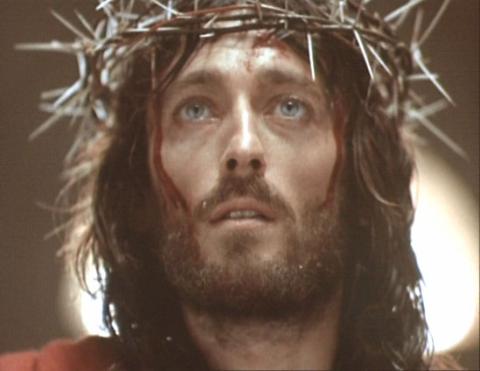I'm taking a history course this year, and I was supposed to write an essay on the reasons for success of Christianity. Enjoy!
Today, Christianity is one of the most wide-spread religions of the world. But its history is filled with bloodshed and violence; early Christians had to endure horrific punishments for their faith. There are many stories of martyrs being stoned to death; of Christians’ bodies being used as torches to light Roman feasts; of people being crucified, sometimes upside-down, simply because they refused to renounce Jesus Christ as their saviour. In the midst of such persecution, one would assume that such a relatively new faith would simply be exterminated. So how did Christianity survive as a religion, when so many other cults of the time did not?
Probably the greatest reason for the spread of Christianity was its appeal to the masses. Most of the early Christian converts were originally Gentiles, not reformed Jews. Though Christianity began as a small sect of Judaism, it wasn’t until Gentiles were allowed to convert that Christianity became so widespread. This was because many Gentiles, though not fully accepting of the polytheistic religions of Rome, were unwilling to convert to Judaism because of the strict kosher dietary laws and the practice of male circumcision. Christianity didn’t require either of these things, and so it was much more appealing to the people of the time.
One of the main attractions of the Christian religion was its mission statement. According to the Christian faith, there was no difference between the rich and the poor, the slave and the noble; all were considered equal in God’s eyes. Everyone was welcome to join in the Christian faith. At a time when society was divided into classes and some were considered the inferiors of others, this was an attractive take on the world. Many converted to Christianity because this religion, unlike many others of the time, promised salvation to everyone, excluding no one.
There are many noticeable similarities between Christianity and the pagan religions of the time. One of these is the relation of Mary, Jesus’ mother, and many of the pagan goddesses, such as the Egyptian Isis. Both Mary and Isis mothered a God; both were prayed to for security and comfort. Another parallel is the date of Christmas and the date of the vernal equinox. Christians originally celebrated Christmas, the day of Jesus’ birth, on January the 6th (some Christian factions still do). The date was changed to December the 25th in the fourth century because on this day, non-Christians celebrated the equinox and the birth of the pagan sun deity; though it was a pagan holiday, many Christian converts would join in the celebrations. The Church, in order to keep converts from celebrating a pagan holiday, declared December 25th Christ’s birthday, and therefore Christians could celebrate on this day, too. Also, the Church allowed pagan symbols of fertility, such as the egg and the rabbit, to represent the resurrection of Christ during Easter; these symbols had previously represented pagan gods (such as Osiris) rising from the dead. It is possible that many of the similarities between Christianity and the pagan religions were intentional, to help new converts identify with the religion. This aided greatly in the spread of Christianity.
Missionary work had a huge impact in making Christianity so prevalent. Spreading the word of the Lord was considered both an honour and a duty; history is overflowing with the names of Christian missionaries – one of the greatest examples being the Apostle Paul. He and other evangelists would travel the world converting people to the new faith. Their cause was greatly aided, of course, in that the first few centuries CE were a historically peaceful time. The nearby seas had just been rid of pirates by Pompey, making travel by ship fairly safe and easy. With no major wars raging, the disciples of Christ were able to travel to virtually anywhere without much difficulty. Churches sprang up all over the known world, and Christianity grew exponentially.
In fact, the only thing preventing Christianity from growing more rapidly were the persecutions. Throughout the first few centuries, the persecutions of Nero, Diocletian, and others led to the martyr of many Christians. However, instead of seeing this as a reason to reject Christianity, many Christians saw honour in dying for their religion. Though some converts reverted back to paganism, many others refused to give up their faith even under torture and threats of death; by thus suffering as Christ had, they believed they would get into the kingdom of heaven. Therefore, for many Christians, the persecutions were yet another way to prove themselves worthy to their God.
The definite structure of the early Church may have been one of the reasons for its success. It had a definite hierarchy – there were church elders, deacons, bishops, etc. When debates between the different factions of the faith became evident, bishops would meet in a synod to discuss the various points of issue; eventually the synod became an annual event. Though small discrepancies occurred in the religion in different regions, the main beliefs and rituals of the Christian faith were the same, kept so by that annual synod. Also, a book used for worship in Christianity developed fairly quickly – the New Testament (containing four Gospels, the Acts of the Apostles, various letters, and the Book of Revelations), together with the Hebrew scriptures, formed the Bible. This structure in the faith, unique from many of the pagan religions of the time, may have played an important role in keeping the Christian faith strong.
Probably the person with the greatest influence in Christianity’s survival and success was Constantine I, the first Christian emperor. It isn’t known for certain when he converted to Christianity; it’s possible he adopted the faith in his youth from his mother, but he may also have come to accept it later on in his life. Either way, in 312 CE, after seeing a vision in the sky, he commanded his troops to paint the Christian symbol Chi Rho on their shields; from then on they were triumphant in battle. A year later, in the Edict of Milan, he outlawed Christian persecution, thereby making Christianity more appealing to the masses. Some twelve years later, he ordered the construction of the new capital, later to be called Constantinople, to be built. He did not allow any pagan shrines or temples to be built in this city; it was to be purely Christian. Throughout the rest of his life, Constantine the Great further encouraged the spread of Christianity through the building of churches and basilicas (including Old St. Peter’s Basilica), donating many Bibles to churches, etc.
Many factors contributed to the rise of Christianity. No one factor can be said to be the reason for Christianity’s overwhelming success. Rather, many contributing influences, such as missionary work, the appeal of the Christian doctrine, and the rule of Constantine the Great, caused Christianity to prevail though many other religions of the time have long since become obsolete.
BIBLIOGRAPHY
Bainton, Roland H. The Horizon History of Christianity. New York: American Heritage Publishing Company Incorporated, 1964.
McManners, John, ed. The Oxford Illustrated History of Christianity. Madrid: Oxford University Press, 1999.
Newman, Garfield & co. Echoes from the Past: World History to the 16th Century. Toronto: McGraw-Hill Ryerson Limited, 2001.
Today, Christianity is one of the most wide-spread religions of the world. But its history is filled with bloodshed and violence; early Christians had to endure horrific punishments for their faith. There are many stories of martyrs being stoned to death; of Christians’ bodies being used as torches to light Roman feasts; of people being crucified, sometimes upside-down, simply because they refused to renounce Jesus Christ as their saviour. In the midst of such persecution, one would assume that such a relatively new faith would simply be exterminated. So how did Christianity survive as a religion, when so many other cults of the time did not?
Probably the greatest reason for the spread of Christianity was its appeal to the masses. Most of the early Christian converts were originally Gentiles, not reformed Jews. Though Christianity began as a small sect of Judaism, it wasn’t until Gentiles were allowed to convert that Christianity became so widespread. This was because many Gentiles, though not fully accepting of the polytheistic religions of Rome, were unwilling to convert to Judaism because of the strict kosher dietary laws and the practice of male circumcision. Christianity didn’t require either of these things, and so it was much more appealing to the people of the time.
One of the main attractions of the Christian religion was its mission statement. According to the Christian faith, there was no difference between the rich and the poor, the slave and the noble; all were considered equal in God’s eyes. Everyone was welcome to join in the Christian faith. At a time when society was divided into classes and some were considered the inferiors of others, this was an attractive take on the world. Many converted to Christianity because this religion, unlike many others of the time, promised salvation to everyone, excluding no one.
There are many noticeable similarities between Christianity and the pagan religions of the time. One of these is the relation of Mary, Jesus’ mother, and many of the pagan goddesses, such as the Egyptian Isis. Both Mary and Isis mothered a God; both were prayed to for security and comfort. Another parallel is the date of Christmas and the date of the vernal equinox. Christians originally celebrated Christmas, the day of Jesus’ birth, on January the 6th (some Christian factions still do). The date was changed to December the 25th in the fourth century because on this day, non-Christians celebrated the equinox and the birth of the pagan sun deity; though it was a pagan holiday, many Christian converts would join in the celebrations. The Church, in order to keep converts from celebrating a pagan holiday, declared December 25th Christ’s birthday, and therefore Christians could celebrate on this day, too. Also, the Church allowed pagan symbols of fertility, such as the egg and the rabbit, to represent the resurrection of Christ during Easter; these symbols had previously represented pagan gods (such as Osiris) rising from the dead. It is possible that many of the similarities between Christianity and the pagan religions were intentional, to help new converts identify with the religion. This aided greatly in the spread of Christianity.
Missionary work had a huge impact in making Christianity so prevalent. Spreading the word of the Lord was considered both an honour and a duty; history is overflowing with the names of Christian missionaries – one of the greatest examples being the Apostle Paul. He and other evangelists would travel the world converting people to the new faith. Their cause was greatly aided, of course, in that the first few centuries CE were a historically peaceful time. The nearby seas had just been rid of pirates by Pompey, making travel by ship fairly safe and easy. With no major wars raging, the disciples of Christ were able to travel to virtually anywhere without much difficulty. Churches sprang up all over the known world, and Christianity grew exponentially.
In fact, the only thing preventing Christianity from growing more rapidly were the persecutions. Throughout the first few centuries, the persecutions of Nero, Diocletian, and others led to the martyr of many Christians. However, instead of seeing this as a reason to reject Christianity, many Christians saw honour in dying for their religion. Though some converts reverted back to paganism, many others refused to give up their faith even under torture and threats of death; by thus suffering as Christ had, they believed they would get into the kingdom of heaven. Therefore, for many Christians, the persecutions were yet another way to prove themselves worthy to their God.
The definite structure of the early Church may have been one of the reasons for its success. It had a definite hierarchy – there were church elders, deacons, bishops, etc. When debates between the different factions of the faith became evident, bishops would meet in a synod to discuss the various points of issue; eventually the synod became an annual event. Though small discrepancies occurred in the religion in different regions, the main beliefs and rituals of the Christian faith were the same, kept so by that annual synod. Also, a book used for worship in Christianity developed fairly quickly – the New Testament (containing four Gospels, the Acts of the Apostles, various letters, and the Book of Revelations), together with the Hebrew scriptures, formed the Bible. This structure in the faith, unique from many of the pagan religions of the time, may have played an important role in keeping the Christian faith strong.
Probably the person with the greatest influence in Christianity’s survival and success was Constantine I, the first Christian emperor. It isn’t known for certain when he converted to Christianity; it’s possible he adopted the faith in his youth from his mother, but he may also have come to accept it later on in his life. Either way, in 312 CE, after seeing a vision in the sky, he commanded his troops to paint the Christian symbol Chi Rho on their shields; from then on they were triumphant in battle. A year later, in the Edict of Milan, he outlawed Christian persecution, thereby making Christianity more appealing to the masses. Some twelve years later, he ordered the construction of the new capital, later to be called Constantinople, to be built. He did not allow any pagan shrines or temples to be built in this city; it was to be purely Christian. Throughout the rest of his life, Constantine the Great further encouraged the spread of Christianity through the building of churches and basilicas (including Old St. Peter’s Basilica), donating many Bibles to churches, etc.
Many factors contributed to the rise of Christianity. No one factor can be said to be the reason for Christianity’s overwhelming success. Rather, many contributing influences, such as missionary work, the appeal of the Christian doctrine, and the rule of Constantine the Great, caused Christianity to prevail though many other religions of the time have long since become obsolete.
BIBLIOGRAPHY
Bainton, Roland H. The Horizon History of Christianity. New York: American Heritage Publishing Company Incorporated, 1964.
McManners, John, ed. The Oxford Illustrated History of Christianity. Madrid: Oxford University Press, 1999.
Newman, Garfield & co. Echoes from the Past: World History to the 16th Century. Toronto: McGraw-Hill Ryerson Limited, 2001.























